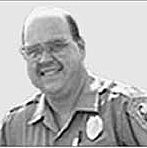Simple EZ Sketching
Mike Byrd
Miami Dade Police Department
Crime Scene Investigations
The sketch of a crime scene is one of the steps in the stages for properly processing a major case crime. There are many publications and articles written to expand your knowledge on the tools and procedures needed to properly prepare your crime scene sketch. Most articles detail the procedures for the various coordinate systems which are used to take your measurements. This will assist the investigator-technician in finding the proper tools and systems to best handle his-her task.
For those who are still exercising the pain staking task of hand drawn diagrams or sketches, this article is written to assist the investigator-technician in using all of his-her available resources. This is an option for achieving a professional looking finished product. There are many products on the market specifically designed to assist the investigator-technician in completing the task. Those items range in price starting at $300 and escalate in price up to the thousands. There are also simple software programs which can be purchased to assist in your project with prices starting in the $30 range.
But sometimes the simplest resources are at our fingertips. If you have access to a computer you can create a sharp, basic, simple and organized looking finished drawing. Windows 95 or 98 is equipped with a simple and easy to learn paint or paint brush program in the accessories window. It is a simple user friendly program that can be mastered in only a few hours. As the investigator-technician becomes more familiar with this tool by experience, his-her abilities will become unlimited in designing and replicating the crime scene through EZ sketching.
The finished product will surpass the look of the hand drawn sketches. Ultimately the investigator-technician will be able to achieve in 2 to 3 hours a complicated extensive scene diagram , that now takes 5 to 6 hours to hand draw. If a mistake is made we all know how hard it is to erase and clean up the shadows on a hand drawn sketch. In the paint program it is as simple as going up to the menu board and 'undo' up to the last 3 items constructed in your sketch. Learn what resources you have at hand and make your job more efficient and simple. Always make your equipment work for you!!!
About the Author

Mike Byrd (1955-2005) joined the Miami-Dade County Police Department in 1983 and started with the Crime Scene Investigations Bureau in 1987. He took an exceptionally active part in the science of forensic crime scene investigations, including development of new techniques, publishing methodology of crime scene procedures, and teaching. Mike developed new techniques for gathering and cataloging crime scene evidence including the lifting of fingerprints, vehicle tire impressions, and footwear impressions.
Mike's methods and analysis withstood the scrutiny of the criminal justice process. He published more than thirty crime scene articles on crime scene evidence collection and for the International Association for Identification and was awarded The Good of the Association Award in 2002 for his innovative identification methodology and techniques. He taught crime scene investigation procedures and techniques at police departments around the country and took great pride at instructing smaller Florida police departments in the latest techniques in evidence gathering.
Mike performed the tough detailed oriented forensic work at many major crime scenes and disasters over two-decades. He gathered, processed, and identified the DNA evidence used to convict the Tamiami Strangler for a string of heinous murders in 1994. His thoughtful gathering of evidence at the Valujet crash allowed families to reach closure for the deaths of loved ones.
Mike Byrd died after a more than two year battle with multiple myeloma cancer. Annually, the Police Officer Assistance Trust awards the Mike Byrd Crime Scene Investigation Scholarship in his honor.
Articles by Mike Byrd
- Applied Basic Concepts...WHAT IT TAKES
- Crash
- Developing and Lifting Latent Footwear Impressions
- Disaster Management
- DNA, The Next Generation Technology is Here!
- Duty Description for the Crime Scene Investigator
- Fragile (Sensitive) Fingerprint Recovery from Mylar Surface
- Hazards and a Crime Scene
- If It's There, We'll Find It!
- Innovative Evidence Identification Markers at a Crime Scene
- Other Impression Evidence
- Packaging Firearms
- Proper Tagging and Labeling of Evidence for Later Identification
- Reaching Beyond the Norm
- Ridge Detail at a Crime Scene
- Simple EZ Sketching
- Simple Tire Standards Collection
- The Corpse as a Scene
- Written Documentation at a Crime Scene
Article submitted by the author

